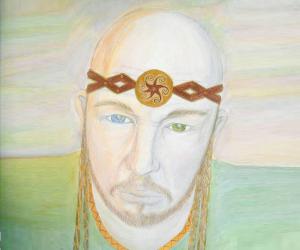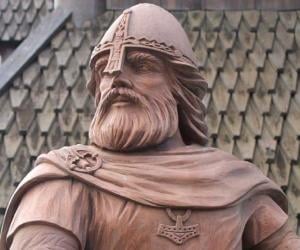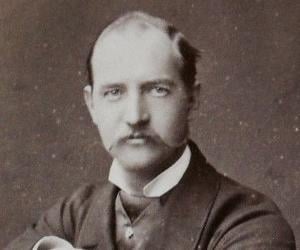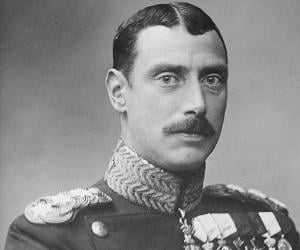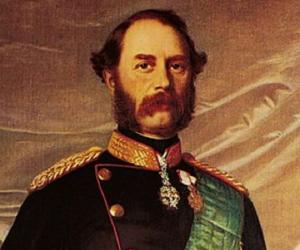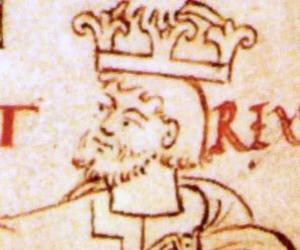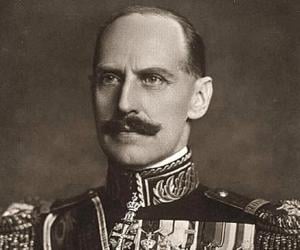Childhood & Early Life
Sigurd’s father, Ragnar Lothbrok, is an important figure in Viking Age Old Norse poetry and sagas. A self-proclaimed descendant of Odin himself, Ragnar led several raids into Francia and Anglo-Saxon England during the 9th century.
While there is little to no historical evidence that there was indeed a Norse chieftain and naval commander named Ragnar in early-medieval Europe, considerable accounts of traditional literature have described his life and adventures.
The 13th century Icelandic legendary saga, the ‘Tale of Ragnar Lodbrok’, claims that Sigurd’s grandfather, Ragnar’s father, was the Swedish king Sigurd Hring. The Hervarar Saga gives Sigurd’s immediate genealogy. His great-great-grandfather was Valdar, after whose death, his son, Sigurd’s great-grandfather, Randver, became the king.
During this period, the king of Denmark was Harald Wartooth. He was an ambitious ruler and not long after ascending the throne, began attacking neighbouring territories. After Randver’s passing, Sigurd Hring established himself as the king. He was quite possibly a subservient ruler to Harald Wartooth.
In later years, Sigurd Hring rebelled against his overlord. Their conflict eventually culminated into the Battle of the Brávellir (Bråvalla) on the plains of Östergötland. Harald was killed and Sigurd Hring subsequently asserted his dominance over both Sweden and Denmark.
Ragnar apparently ascended the throne after the death of his father in 804. In the later years of his reign, the Vikings invaded France and eventually laid siege to Paris in 845.
The Frankish accounts state that the name of the leader of the Viking forces was “Reginherus”, who, according to many scholars, is actually Ragnar of the sagas. He raided France with about 120 ships that bore about 5,000 men. The Frankish king Charles the Bald, in comparison, had a much smaller army.
Paris eventually fell to the Vikings but they left when Charles agreed to pay them a ransom of 7,000 French livres (2,570 kilograms (83,000 ozt)) of silver and gold.
Ragnar married three women. His first wife’s name was Lagertha, who was a shieldmaiden. They had three children together, one son, Fridleif, and two daughters, whose names are not known. Thora Borgarhjört, the daughter of Herrauðr, the king or earl of Götaland, was his second wife. She bore him two sons, Eiríkr and Agnar. After her passing, Ragnar married Aslaug.
A prominent figure in Norse traditional literature in her own right, Aslaug was the daughter of Sigurd, the slayer of the dragon Fafnir, and the shieldmaiden Brynhildr. When Ragnar first saw her, he immediately became mesmerised by her beauty.
However, he wanted to test her intelligence and asked her to appear before him neither dressed nor undressed, neither fasting nor eating, and neither alone nor in company. A short time later, she came to him wearing a net, biting an onion, and in the company of a dog.
Impressed by her resourcefulness, Ragnar proposed marriage. However, Aslaug declined and asked him to complete his mission in Norway first. Their marriage did eventually take place and she gave him several sons, including Sigurd. The others were Ivar the Boneless, Hvitserk, Ubbe, and Björn Ironside. Some sagas name two other sons, Rognvald and Halfdan Ragnarsson.
Aslaug was a Völva, a powerful shaman and seer in Norse mythology. When she learned that Ragnar was planning to replace her with a Swedish princess named Ingeborg, she revealed her true identity to him.
In order to convince him, she prophesied that she would bear him a son who would have the image of Fafnir in his eye. Sigurd was born with a distinctive mark in one of his eyes. It reminded his parents of the Ouroboros (a snake biting its own tail).
As a youth, he was possibly the closest to his father among all his siblings. He later joined Ragnar his expedition through Rus' to the Hellespont. Some sources also state that he spent a considerable part of his later life in Scotland and the Scottish Islands.
Continue Reading Below
In Traditional Literature
As Ragnar’s children grew up, they proved themselves to be equal in ferocity and cunningness to their father. They invaded Zealand, Reidgotaland (Jutland), Gotland, Öland and all the small islands and eventually established the centre of their power in Lejre in Zealand. Ivar, being the oldest and most intelligent, became their leader.
Ragnar grew jealous of his own children’s achievements and made Eysteinn Beli the king of Sweden. He told Eysteinn to guard Sweden against his sons and left on an expedition to the Balkan region.
During this period, Sigurd’s half-brothers, Eiríkr and Agnar, became involved in a dispute with Eysteinn and were killed. When Sigurd and his brothers heard of it, they invaded Sweden along with their mother, defeated Eysteinn, and killed him.
The news of their conquest of Sweden eventually reached Ragnar who became even more furious. In order to prove that he was better than his sons, he decided to raid England with only two knarrs (merchant ships).
While he did enjoy some success during the initial days of the campaign, he was eventually defeated and captured by Ælla, the king of Northumbria. Ragnar was then dropped into a snake’s pit. As he died, he supposedly said, “How the young pigs would squeal if they knew what the old boar suffers!"
Ælla dispatched an envoy to Scandinavia to let Sigurd and his brothers know that their father had died. According to sources, Sigurd’s anger and grief were so immense that he sliced himself open to the bone with a knife he had been holding in his hand.
He and his brothers wanted revenge. They amassed a powerful army and sailed to England in 866. However, the first engagement between the forces ended in disaster for the Vikings. They were driven back and Ivar realised that the English army was too powerful. He subsequently settled for peace.
Later, the brothers assembled a massive army, which the Anglo-Saxon texts call “The Great Heathen Army”. Ivar instructed his men to conquer and sack York, which forced Ælla to face the Vikings on their terms.
Following Ivar’s orders, the Vikings pretended that they were retreating until Ælla overcommitted his forces. The English soldiers were subsequently surrounded and slaughtered. ‘The Tale of Ragnar's Sons’ gives an account of what happened afterwards. Ælla was taken captive and the brothers decided that the “blood eagle” would be performed on him.
Continue Reading Below
Blood eagle is a Norse ritualised form of execution. There is only one other instance in the late skaldic poetry where the ritual has been described. As with Ælla, the other victim was of nobility as well. During the ritual, the victims were forced to kneel, their ribs were sawed off from the spine with a sharp tool, and their lungs were pulled out to be placed on each shoulder, so they would look like the folded wings of an eagle. Ælla died screaming, leaving the brothers in control of a vast territory.
According to ‘The Tale of Ragnar’s Sons’, after his father’s death, Sigurd controlled Zealand, Scania, Halland, the Danish islands, and Viken. When one of his brothers, Halfdan Ragnarsson, passed away, Sigurd ascended the Danish throne in about 877.
‘The Tale of Ragnar’s Sons’ also states that he married one of Ælla’s daughters, princess Blaeja and had four children with her, Álof Sigurðardóttir, Þora "Tora" Sigurðardóttir, Áslaug Sigurðardóttir, Helgi Sigurðarson.
Historical Accounts
After his father, Helgi became the king of Denmark. However, he was deposed by Olaf the Brash in about the year 900. According to ‘The Tale of Ragnar’s Sons’, Sigurd had one more son, Harthacnut I of Denmark, who was supposedly the father of Gorm, the first historically recognized king of Denmark. After Gorm, his son Harald Bluetooth ascended the throne.
Sweyn Forkbeard was the son of Harald Bluetooth. He founded the Danish Empire (also known as the North Sea Empire) and conquered England, which made him the first member of his legendary family to be the sovereign ruler of England. His son was Cnut the Great, under whom the empire reached its peak size and grandeur.
Facts About Sigurd Snake-in-the-Eye
Sigurd Snake-in-the-Eye earned his nickname due to the way his eye appeared, resembling a snake's slitted pupil, rather than any association with deceit or cunning.
He was known for his exceptional skill in combat and strategy, often leading his clan to victory in battles against rival factions.
Sigurd was a skilled horse rider and was said to have a special bond with his steed, which he rode fearlessly into battle.
Despite his fearsome reputation on the battlefield, Sigurd was also known for his sense of humor and love of storytelling, often entertaining his comrades with tales around the campfire.
Sigurd was a devoted family man, known for his loyalty and dedication to his loved ones, a side of him that is often overlooked in tales of his warrior prowess.
